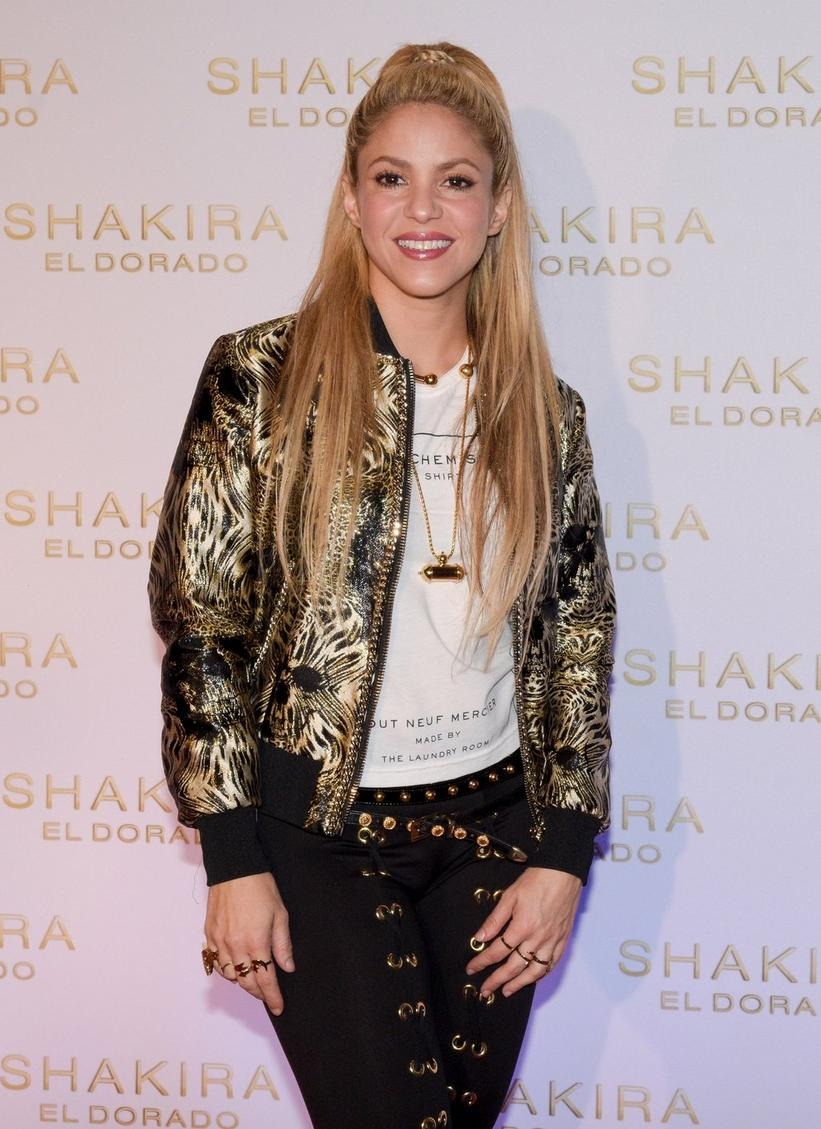Shakira’s Road To ‘Las Mujeres Ya No Lloran’: How Overcoming A Breakup Opened A New Chapter In Her Artistry
When Shakira’s “Bzrp Music Sessions, Vol. 53” was released in January of 2023; its success seemed like a freak incident, explainable as a perfect but isolated storm.
Their virulently catchy track — which happens to spill scalding tea on her breakup with retired Spanish soccer player Gerard Piqué — set streaming records and took home a Latin GRAMMY for Song Of The Year. Today, the song’s success looks more like the first crashing wave of a mᴀssive comeback for Shakira.

The three-time GRAMMY winner followed her Bzrp Session with another hit single, “TQG,” collaborating with Karol G. That song went to No. 1 on the Billboard Global 200, and the duo cleaned up at the Latin GRAMMYs.
In hindsight, all of this was a mere preamble to the announcement of Shakira’s Las Mujeres Ya No Lloran (Women Don’t Cry Anymore), due March 22. The album will be her first in seven years, but the sound is very much of the moment, leaning into a high-gloss urban Latin pop sound that delves in reggaeton, bachata and corrido.
The album is no comeback. With a star as big as Shakira — one who performed at the Super Bowl in 2020 and had her own exhibit at the GRAMMY Museum — it’s hard to make the case that she ever left the public eye. Yet the Colombian superstar has put out only a trickle of singles since 2017, when she released her GRAMMY-winning album El Dorado. Prior to the BZRP session, her last major hits were in 2016 with “La Bicicleta,” a collaboration with Carlos Vives, and “Chantaje,” featuring Maluma, which went to No. 1 on the Billboard Hot Latin Songs.
It’s impossible to talk about this period of retreat, or her new album, without talking about the personal upheavals Shakira has gone through in recent years. In June of 2022, Shakira and Gerard Piqué, with whom she has two sons, publicly announced the end of their 11 year relationship. Starting with 2022’s “Monotonía,” featuring Ozuna, nearly every song she has released since then deals directly with the split and the emotional turmoil she has felt because of it.
The singer and songwriter herself is not shying away from the fact that her music has been a therapeutic outlet. “I feel like in this moment of my life, which is probably one of the most difficult, darkest hours of my life, music has brought light,” she told Elle in 2022.
Case in point: her Bizarrap session. “Someone should have taken my pH๏τo the day I worked on the ‘Bizarrap Session 53,’ a before and after. Because I went into the studio one way and left in a completely different way,” Shakira told Mexican television channel Televisa. “He gave me this space, this opportunity to let it out and it really was a huge release, necessary for my own healing, for my own recovery process.”

That feeling of catharsis continued in her work on Las Mujeres. “Making this body of work has been an alchemical process. While writing each song I was rebuilding myself. While singing them, my tears transformed into diamonds, and my vulnerability into strength,” the artist said in a statement on Instagram.
Shakira is styling the album as a testament to resilience in the face of adversity, tapping into an understanding that her experiences have a broad resonance. While accepting Billboard’s 2023 Woman Of The Year award, Shakira discussed her “year of seismic change.”
“I’ve felt more than ever — and very personally — what it is to be a woman,” she said. “It’s been a year where I’ve realized we women are stronger than we think, braver than we believed, more independent than we were taught to be.”
Indeed, with strength and bravery, Shakira proceeded to channel her individual hurt into a message of universal empowerment. Ahead of her album release, she’s even more explicit about the details of her separation and the impact the relationship had on her career. “For a long time I put my career on hold, to be next to Gerard, so he could play football. There was a lot of sacrifice for love,” recently told The Sunday Times.

As she told Billboard for her 2023 cover story, settling down in Barcelona with Piqué and their two children, far from music industry centers, made it difficult for her to work. “It was complicated logistically to get a collaborator there. I had to wait for agendas to coincide or for someone to deign to come,” she explained.
Shakira has since relocated to Miami, a location that played a major role in making her new album possible.
One of the hallmarks of a true pop star is the ability to evolve with the culture without losing their idenтιтy. Over decades, and with each release, Shakira has broken a barrier or risen above an obstacle to succeed beyond expectations – whether it’s leading the first Spanish-language broadcast on MTV with her 2000 “Unplugged” concert, or learning English to write her own crossover pop debut. Each move has felt authentic.
It is not an easy task, but Shakira accomplishes this alchemy beautifully every few album cycles, starting with her debut as an alt-leaning, brunette singer/songwriter in the mid ’90s. At the turn of the millennium, she made the jump to international fame with a cascade of golden curls and Laundry Service, the English-language album that capitalized on the first wave of crossover Latin pop. She closed out the decade in a whirl of high-gloss dance pop with the Pharell produced She Wolf. Along the way, there was one platinum selling album after another and the No. 1 hit “Hips Don’t Lie,” among several Top 10 singles, setting the stage for her to blaze through much of the 2010s.

Shakira is well-aware of how hard she has had to work even after crossover success.
In 2019, she told Billboard, “This whole new world had opened up to me, and with it came so many great opportunities, but I continued to pursue impossible goals such as making a song like ‘Hips Don’t Lie,’ for example—that had a Colombian cumbia and a mention of Barranquilla in the middle of it—play on American radio. I remember I said to [then Sony Music Chairman] Donny Ienner, ‘You have to trust me on this one. This is going to happen, this song is going to blow up.’”
With El Dorado, she caught the second wave of Latin pop crossover, the one tipped off by Luis Fonsi’s now-infamous 2017 earworm “Despacito.” El Dorado, is one of Shakira’s more Latin leaning albums in the long history of her bicultural and bilingual music career. The songs are sung largely in Spanish and her choice of features on the album are almost entirely Latin pop and reggaeton artists: Maluma, Nicky Jam, Prince Royce and Carlos Vives. The album’s May 2017 release coincided with a rising global interest in reggaeton.

Shakira wasn’t following a trend; she was just in touch with the moment as usual. She released “Chantaje” months before “Despacito,” and “Bicicleta,” her song with Carlos Vives, which combines elements of reggaeton and vallenato, came out in 2016.
With the continued mainstream global success of Latin artists, Shakira may no longer see a need to release an English-language album for every album in her mother tongue. Las Mujeres Ya No Lloran breaks with tradition in that it is her second Spanish-language album in a row. It’s also loaded with features from the world of Latin music, including Ozuna, Rauw Alejandro, Manuel Turizo, and Karol G. The moment could not be better for an album that explores forward looking pop reggaeton, ᴀssisted by some of the brightest young stars in the genre.
If the past is any indicator, this era is going to be another step up for the artist. Beyond the album release, Shakira is teasing another tour. As she told Billboard, “I think this will be the tour of my life. I’m very excited. Just think, I had my foot on the brakes. Now I’m pressing on the accelerator — hard.”